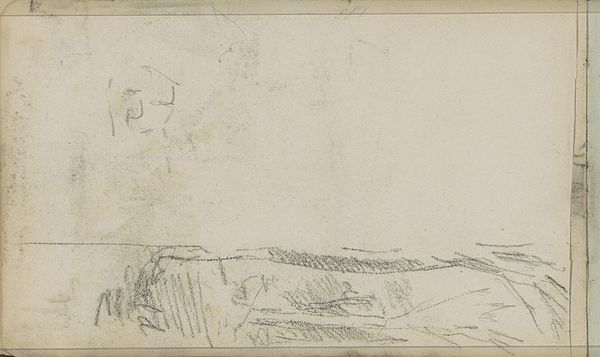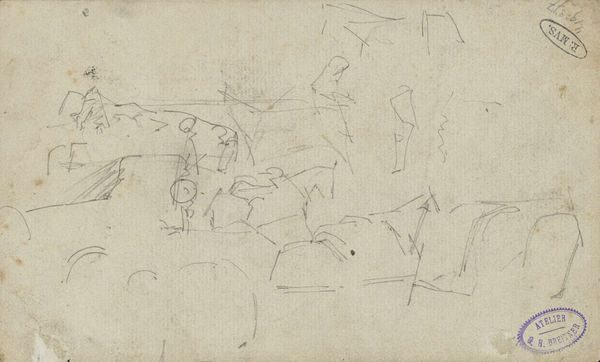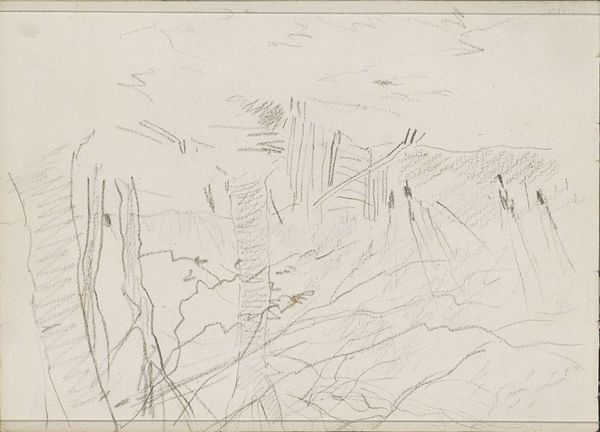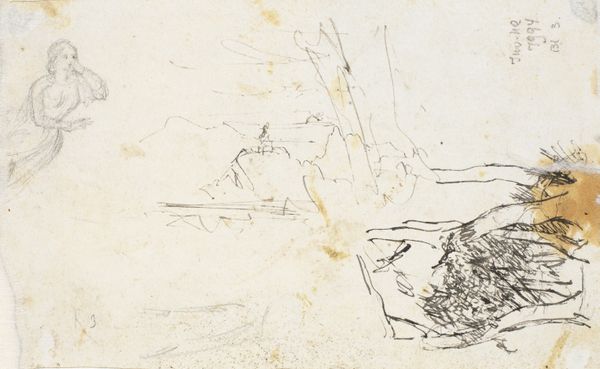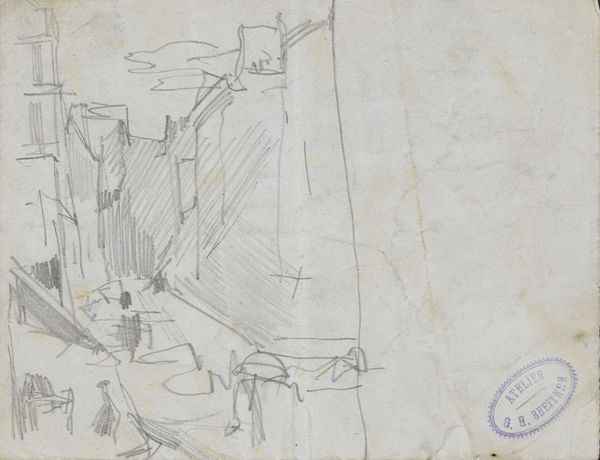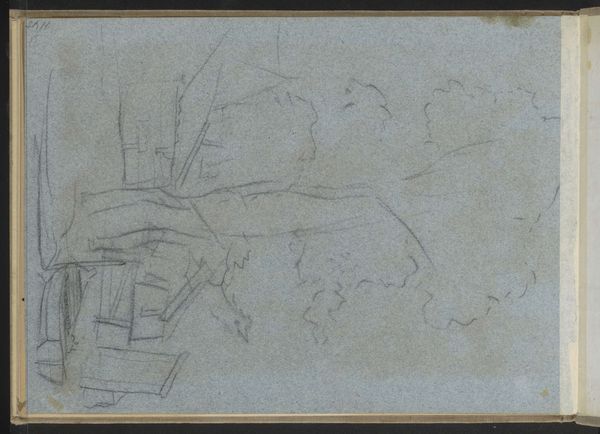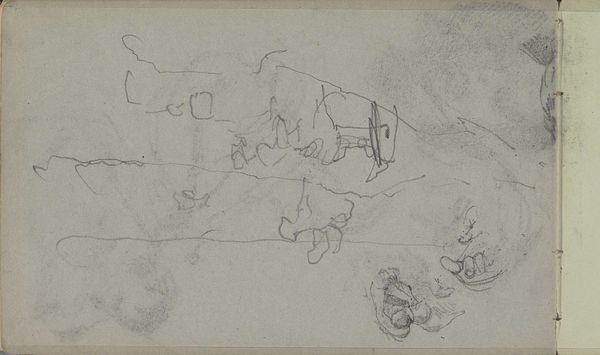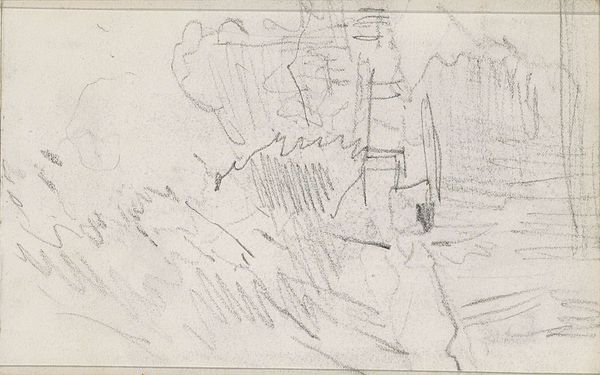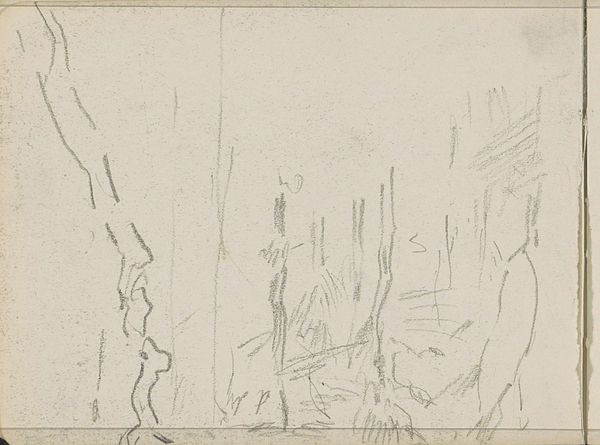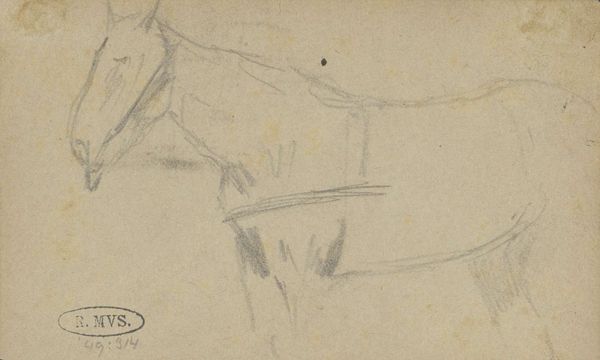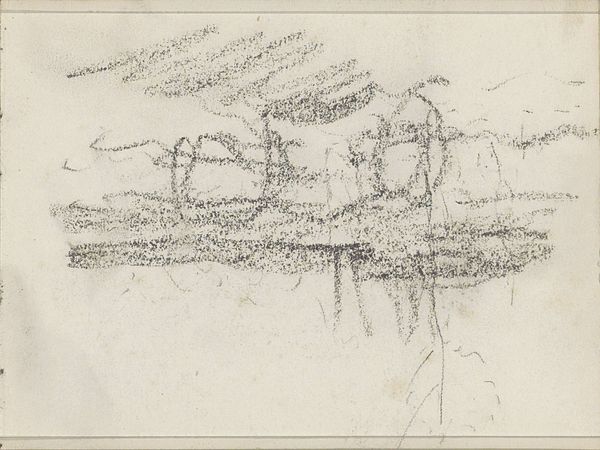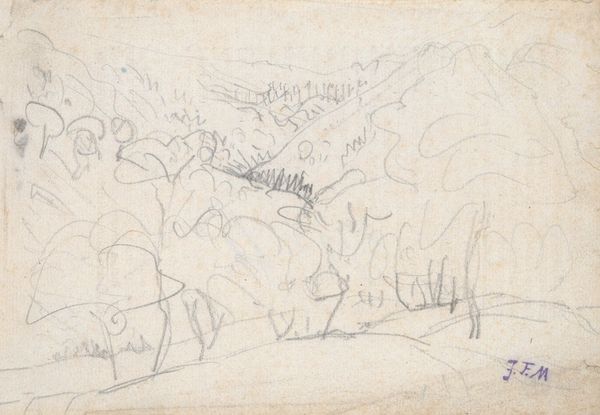
drawing, pencil
#
drawing
#
impressionism
#
pencil sketch
#
landscape
#
pencil
#
realism
Copyright: Public Domain: Artvee
Editor: Here we have Jean-François Millet's "Cottage Near Vichy," created circa 1866-1868, rendered in pencil. It feels like a fleeting impression, capturing a rustic scene in very few strokes. What strikes you about this work? Curator: Well, I see more than just a cottage. Think about what a cottage represents. Shelter, yes, but also a connection to the land, to family, to tradition. The sketchiness almost reinforces this – it's not about a perfect, idealized structure, but about the essence of 'home,' a fundamental human desire for belonging. Notice how the lines fade almost into nothing around the edges. Where does the cottage end, and nature begin? Does it matter? Editor: That’s a lovely way to put it! So, are you suggesting the ambiguity is intentional? That it reflects something deeper about our relationship with nature and home? Curator: Precisely! And Vichy, the area in France, itself carries weight. Consider the rural, agricultural lifestyle that dominated at the time. Millet was deeply invested in depicting the lives of ordinary people, not just heroic figures. The cottage becomes a symbol, then, for a whole way of life rooted in the land. The loose drawing style reinforces the impression of work in situ and plein air, adding immediacy and truth. Editor: I hadn't considered how the location itself added meaning. It does invite one to consider how Millet’s contemporary audience would have viewed that lifestyle, too. I initially saw the sketch as purely aesthetic, but you have now convinced me there's far more substance behind it. Curator: Exactly! Every mark, every element can speak volumes about cultural memory, human psychology, and our eternal quest for connection.
Comments
No comments
Be the first to comment and join the conversation on the ultimate creative platform.
